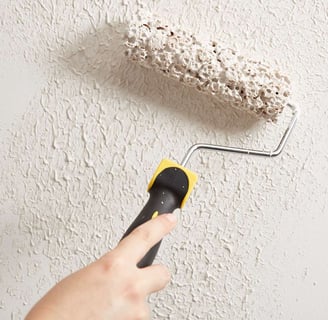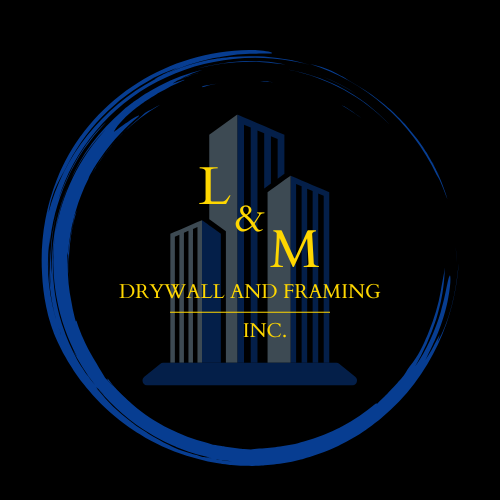CALL TODAY! → (321) 442-6490
Understanding Knockdown Drywall: A Guide to Textured Finishes
Add subtle style with knockdown texture. We explain how it’s applied and where it shines best. Great for high-traffic commercial spaces.
4/30/20255 min read


What is Knockdown Drywall?
Knockdown drywall is a popular textured finish that enhances the aesthetic appeal of walls and ceilings in both residential and commercial properties. This distinctive technique involves applying a mixture of joint compound and water to drywall, creating a texture that is then flattened with a knockdown knife or a trowel. The resulting finish is characterized by a mottled appearance, giving depth and visual interest to otherwise flat surfaces.
The history of textured finishes dates back several decades, with roots in various artistic expressions and practicality. Initially, such textures were employed to hide imperfections in drywall and to add visual stimulation to plain walls. Over time, the knockdown technique emerged as a favored option due to its balance of durability and visual allure. Its growing popularity can be attributed to the desire for unique designs that stand out, making knockdown a sought-after choice for homeowners and designers alike.
Key features of knockdown drywall include its versatility and ability to complement various interior design styles. It can be applied in different degrees of heaviness, allowing homeowners to choose the level of texture that best suits their preferences. Additionally, knockdown texture can effectively mask blemishes, making it a practical solution for aging walls or ceilings. The dampened texture is not only visually appealing but also serves to diffuse light, thereby enhancing the overall ambiance of a space.
In various applications, knockdown drywall can be used in living rooms, kitchens, and offices, contributing to a sense of warmth and character. Its adaptability and stylistic appeal make it a fantastic option for those looking to enhance their interiors with a unique touch. As the demand for customized and textured finishes continues to rise, knockdown drywall stands out as a prime choice for modern design.
The Process of Applying Knockdown Texture
Applying knockdown texture to drywall is a popular technique that adds depth and character to interior walls. This textured finish can enhance the visual appeal of any room when executed properly, requiring specific tools and careful preparation. Before starting, gather essential materials: a knockdown knife or trowel, spray texture gun, air compressor, primer, and a drop cloth to protect your floors.
Preparation is crucial to ensure a smooth application. First, ensure that the drywall surface is clean and free from dust or debris. Repair any imperfections, such as dents or holes, using joint compound, and allow it to dry fully. Next, apply a primer coat to the drywall. This step is important as it promotes better adhesion of the texture material and provides a uniform surface, enhancing the overall finish.
After preparing your space and materials, mix the joint compound or texture material according to manufacturer instructions. The mixture should be the right consistency to ensure an even application. Once mixed, load the texture into the spray gun and begin applying it to the walls in a consistent pattern, typically using a sweeping or circular motion. It is advisable to practice on a scrap piece of drywall to refine your technique before tackling the finished walls.
After applying the texture, allow it to sit for approximately 10 to 15 minutes, depending on the humidity and temperature of the environment. The key step in achieving the knockdown effect is to lightly “knock down” the texture using the trowel or knife, creating a flattened appearance. Practice with varying pressure to achieve the desired look. Remember to prioritize safety by wearing protective gear, including goggles and a mask, to avoid inhalation of dust particles during the application. Mastery of this technique develops with practice, so take your time to hone your skills for a flawless finish.
Exploring Different Styles of Knockdown Texture
Knockdown texture is a popular choice for many homeowners and builders due to its versatility and aesthetic appeal. This textured finish can be applied in various styles, each providing a unique look to a space. The three primary styles are heavy, moderate, and light knockdown textures, and understanding these differences can aid in selecting the right one for a specific project.
Heavy knockdown texture is characterized by its pronounced peaks and valleys, creating a dramatic effect on ceilings and walls. This style involves a thicker application of joint compound, which is then knocked down with a trowel or blade to create the desired texture. The result is a more rustic and bold appearance, which works well in settings where the intention is to make a strong visual statement.
In contrast, moderate knockdown texture presents a more balanced look. This style incorporates a moderately thick layer of joint compound, resulting in less pronounced peaks than its heavy counterpart. The finish is smooth yet retains enough texture to provide visual interest without overwhelming the space. Moderate knockdown is often favored in contemporary designs where subtlety is key, as it can enhance ceilings and walls while maintaining an elegant ambiance.
Lastly, light knockdown texture offers a gentle touch, suitable for those who prefer a more refined texture. This style uses a thin layer of joint compound that is knocked down just enough to create a faint texture. Light knockdown is ideal for achieving a soft look, making it popular in modern and minimalist interior settings. It complements various decorating styles, providing depth without the boldness of heavier options.
When selecting the appropriate knockdown texture style, consider the overall aesthetic of the space and personal preferences. Visual examples of each style can greatly aid in the decision-making process, allowing you to visualize how different textures will interact with light and colors in your environment.
Comparing Knockdown Texture to Other Finishes
When evaluating different wall finishes for commercial interiors, it is crucial to consider the distinct characteristics of knockdown texture compared to other popular options, such as orange peel and smooth textures. Each finishing technique has its own unique appeal, benefits, and drawbacks that contribute to the overall aesthetic and functionality of a space.
Knockdown texture is characterized by its mottled appearance created by flattening joint compound after it has been applied and partially dried. This technique effectively conceals imperfections in walls, making it a preferred choice for areas with minor damage or irregularities. In contrast, the orange peel finish features a more subtle texture that mimics the bumpy surface of an orange. While it is effective for hiding flaws as well, it generally falls short of the dramatic effect achieved by knockdown texture. On the other hand, smooth textures offer a sleek and modern look, ideal for high-end commercial spaces. However, they require a significant amount of preparation and maintenance, as any small blemish can be painfully visible against a flat surface.
In terms of maintenance, knockdown texture holds an advantage over smooth finishes, as its surface imperfections can hide dirt and stains more effectively. This quality makes knockdown texture a practical choice for high-traffic areas where maintenance is a concern. Conversely, the smooth texture demands regular cleaning and is vulnerable to scuffs and scratches, making it less suitable for busy environments. Additionally, the knockdown finish assists in reducing glare under direct lighting, contributing to a more comfortable visual experience in commercial settings.
Ultimately, the choice between knockdown texture, orange peel, and smooth finishes depends on individual needs and preferences. However, the versatility, aesthetics, and low maintenance requirements of knockdown texture make it a strong contender for those seeking a professional and durable interior finish.
SUBSCRIBE TO OUR NEWSLETTER
CALL:
(321) 442-6490
HOURS:
Mon-Sat
9:00am-5:00pm
COPYRIGHT © 2025 L&M Drywall And Framing INC.


